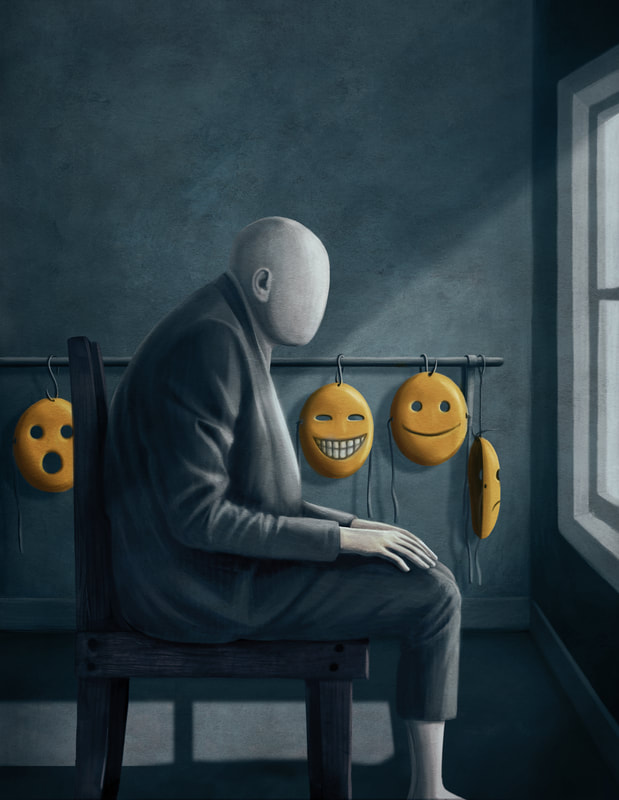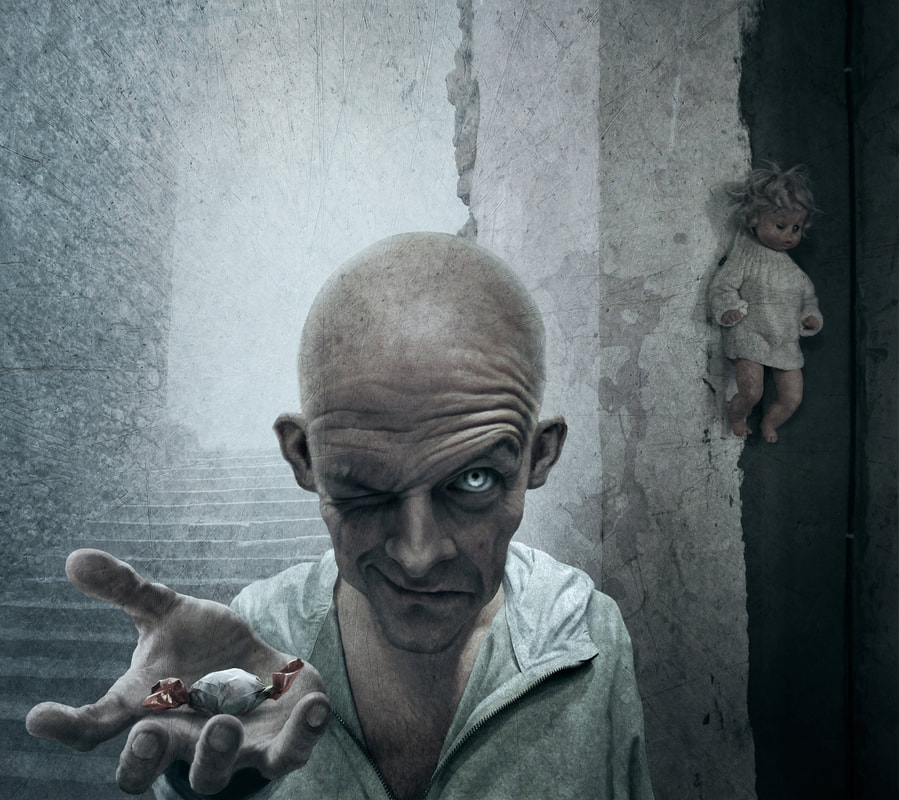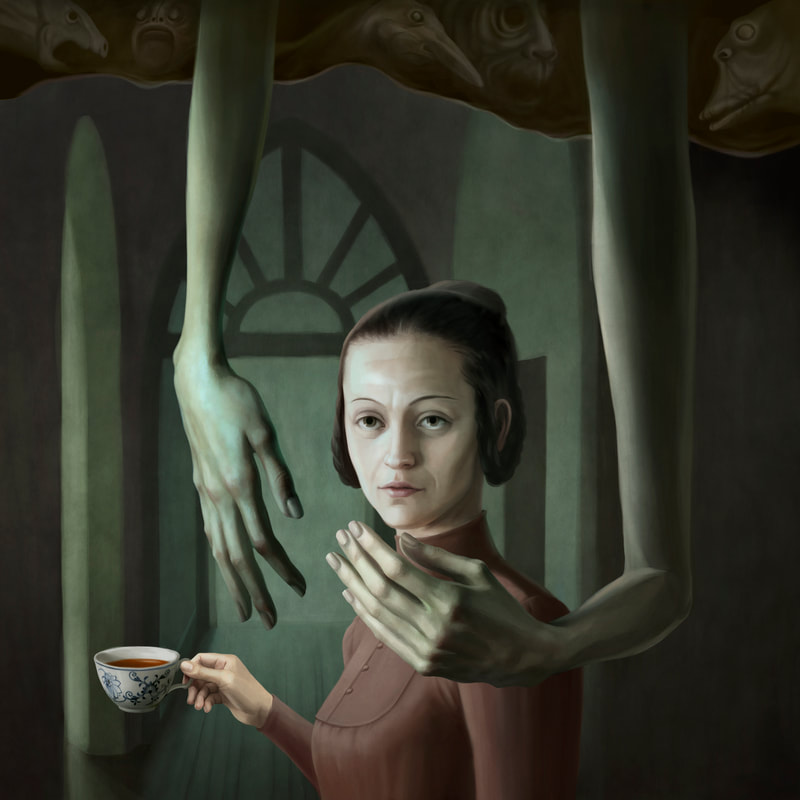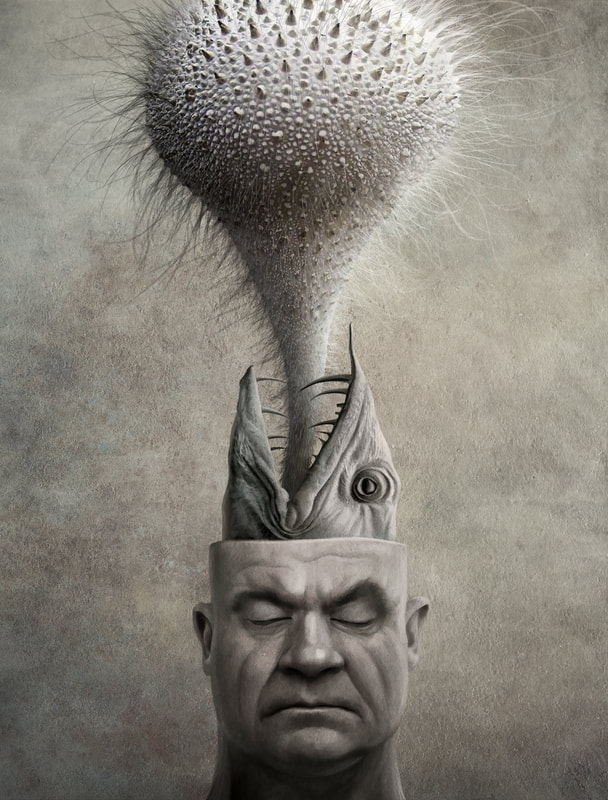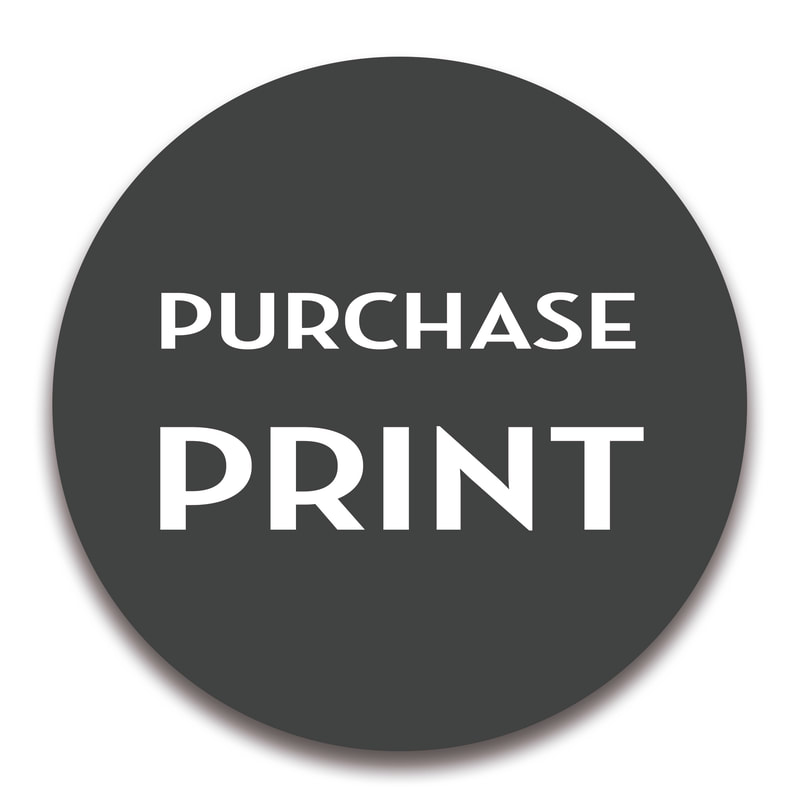|
FAIRY TALES MIX WITH RENAISSANCE, WHEN RUSSIAN JULIANA KOLESOVA DIVES INTO HER TWOFOLD PORTRAITS OF MYSTICISM.
MARIE BERTELSEN | ARTICULATE #21 | OCT 2019 One of the first things you notice about Kolesova’s art is it being twofold: The artwork can be divided into mystical fairy tale world and the other into a Renaissance style portrait painting. Kolesova’s artwork mainly consists of acrylic and oil painting or digital painting, or a combination of both. Having a background in Fine Art, Design, and World History of Art and costumes has shaped Kolesova’s art. This is shown in both the art style and choice of objects. If we look further, the art is contemporary. By aiming for the elegance of classical art and adding a modern vision, Kolesova’s intention is to merge elements and create new curious art.
Kolesova explains that everything she sees around her, and all forms of art and life influences her. The biggest inspiration, however, comes from living in Toronto, which has pieces of almost every culture. Toronto merges both ethnic and modern traditions and backgrounds, with a constant wave of something new and contemporary.
"Those who enter the art scene should ideally be the ones with intentionality. In other words the goal of an artists is ultimately to communicate and create change. Artists have an exclusive opportunity to reshape and improve society and should ideally pursue it."
|
Not surprisingly, she is inspired by various different art forms, such as traditional African art, art from the European Middle age and Russian icons. Among specific artists are, Pieter Bruegel, Paul Gauguin, Rene Magritte and Zdzislaw Beksinski. Among more modern artists it is specifically the world view, which inspires her, such as Jenny Saville, Dino Valls and the portraits of Lita Cabellut’s.
Kolesova’s art can neither be explained as pre-thought, nor being impulsive. When creating art, Kolesova has a specific starting point. It can be an emotion, something historical or cultural which inspires Kolesova. This leads to a specific image, where the art can work as a metaphor. Only then does Kolesova start to look at the colour and composition. In terms of composition, Kolesova first of all states this as being defined and understood differently. Interpretations of art and what is good varies, which is easy to see if we look throughout history. There have been different ideals such as the classical aim for balance and harmony and later on modern ideals of the movement and imbalance. However, three fundamental things can still be found as a prerequisite for good art: technical skill, knowledge and meaning. These constitutes, to Kolesova, the foundation which then gives the freedom to choose one’s own way. |
Kolesova talks about the critique her approach to art has created. The origin and choice of art come from Kolesova illustrating her own stories. Illustrative art has been criticised for being too literary. Parallels can be drawn to the 18th century, where, Kolesova explains, the beauty in the moment was the focus, instead of the semantic message. But focusing too much on the form resulted in a peak, where art stagnated. The same happened to postmodern and abstract art due to its popular and wide use. Therefore Kolesova suggests reintroducing semantic and content art. By using both illustrative and beautiful art and combining it with a focus on content, art can be both heard and seen.
Kolesova has a specific thought that goes into her artwork but acknowledges that interpretation is not tied to one person or meaning but experienced individually. Therefore Kolesova is against ascribing a single genre to art or using a too specific description. fundamentally, art should come from a place of honesty and be the rawest expression of itself.
This article about JULIANA KOLESOVA takes part of the 5th anniversary magazine, ARTICULATE #21. Read, download or order your print version of the full publication below
|
SUPPORTARTICULATE
www.articulate.nu SUPPORT Monday - Friday 8:00 - 16:00 [email protected] +45 30 48 19 81 Head Quarters VAT DK40953191 |
|

